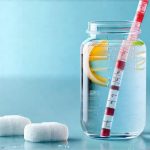Intermittent fasting (IF) has surged in popularity as a dietary approach offering potential benefits like weight management, improved insulin sensitivity, and cellular repair. However, alongside these advantages, IF can sometimes disrupt the delicate ecosystem within our gut – the gut microbiome – and lead to electrolyte imbalances. This is especially true if not managed thoughtfully or if fasting periods are overly restrictive or prolonged. The shift in eating patterns dramatically alters what your gut bacteria feed on, potentially leading to dysbiosis (an imbalance of gut microbes). Simultaneously, changes in food intake can reduce the consumption of essential electrolytes like sodium, potassium and magnesium—critical for various bodily functions, including digestion and nerve transmission. Recovering from these effects isn’t about rushing back to unrestricted eating; it’s about a strategic re-introduction of nutrients and practices that support gut health and restore electrolyte balance.
Many individuals begin IF expecting immediate results, overlooking the importance of preparation and recovery. The body requires time to adapt to both fasting and refeeding phases. Neglecting this can lead to digestive issues like bloating, gas, diarrhea or constipation, fatigue, headaches, and even a weakened immune system. Electrolyte depletion exacerbates these symptoms, making the transition back to regular eating challenging. It’s crucial to remember that IF isn’t a one-size-fits-all solution and should be approached with awareness and careful attention to your body’s signals. The focus should always remain on nourishing the body rather than simply restricting food intake. This article will explore strategies for effectively restoring gut balance and replenishing electrolytes after intermittent fasting, emphasizing sustainable practices that support long-term health.
Rebuilding Your Gut Microbiome
A healthy gut microbiome is foundational to overall wellbeing. Intermittent fasting can alter the composition of your gut bacteria because they rely on the consistent influx of prebiotics (fibers) and probiotics (beneficial bacteria). When food intake is restricted, these microbes are affected, potentially leading to a decrease in diversity – a hallmark of an unhealthy gut. Restoring this balance requires a multifaceted approach focusing on dietary changes and targeted supplementation if necessary. Prioritizing foods that nourish beneficial gut bacteria is paramount.
The first step towards rebuilding your microbiome is gradually reintroducing easily digestible foods. Begin with simple, whole foods like well-cooked vegetables (steamed carrots, zucchini), bone broth, and fermented foods in small quantities to assess tolerance. Avoid processed foods, sugary drinks, and excessive amounts of fat initially. As your digestive system adapts, slowly incorporate more complex carbohydrates like sweet potatoes and quinoa. The key is gradual progression. Listen carefully to your body; if a food causes discomfort, eliminate it temporarily and reintroduce it later.
Furthermore, increasing prebiotic intake is vital. Prebiotics act as food for the beneficial bacteria in your gut. Excellent sources include: – Garlic – Onions – Leeks – Asparagus – Bananas (slightly green are better) – Oats – Apples. Incorporating these foods into your diet will help foster a thriving microbial community. Probiotic-rich foods, such as yogurt (unsweetened), kefir, sauerkraut, kimchi and kombucha can also be beneficial but introduce them cautiously to avoid digestive upset. Consider consulting with a healthcare professional before starting any new supplementation regime. Tracking gut health can help you monitor changes during this process.
The Role of Fiber in Gut Recovery
Fiber is arguably the most important nutrient for gut health. Different types of fiber play distinct roles in supporting a healthy microbiome. Soluble fiber dissolves in water, forming a gel-like substance that feeds beneficial bacteria and slows down digestion, promoting regularity. Sources include oats, beans, apples, and citrus fruits. Insoluble fiber, on the other hand, adds bulk to stool and helps move waste through the digestive system. Good sources are whole grains, vegetables, and wheat bran.
During IF, the reduction in food intake often means a corresponding reduction in fiber consumption. Reintroducing fiber gradually is crucial to avoid bloating and gas. Start with small amounts of soluble fiber and slowly increase your intake over time. Focus on variety. Different fibers support different bacterial species, contributing to greater microbiome diversity. Remember that adequate hydration is essential when increasing fiber intake; water helps move the fiber through the digestive tract.
A common mistake during gut recovery is attempting to rapidly increase fiber consumption. This can overwhelm the digestive system and exacerbate symptoms. Instead, adopt a slow-and-steady approach, focusing on whole, unprocessed foods as your primary source of fiber. Consider keeping a food journal to track your intake and identify any trigger foods. Over time, you will be able to determine how much fiber your body can tolerate without experiencing discomfort. How to balance gut acidity is also important for optimal digestion of fibrous foods.
Hydration’s Impact on Gut Health
Dehydration is often overlooked but plays a significant role in gut health. Water is essential for proper digestion, nutrient absorption, and the elimination of waste products. When dehydrated, the colon pulls water from stool, leading to constipation, which can further disrupt the microbiome. Intermittent fasting can inadvertently contribute to dehydration as individuals might reduce their overall fluid intake alongside food restriction.
Aim to drink at least eight glasses of water per day, but adjust based on your activity level and climate. Electrolyte-rich beverages (discussed later) can also help with hydration and replenish lost minerals. Avoid sugary drinks and excessive caffeine, which can dehydrate you further. Pay attention to the color of your urine – pale yellow indicates adequate hydration, while dark yellow suggests dehydration. Make water easily accessible throughout the day, such as keeping a reusable bottle nearby.
Beyond simply drinking enough water, consider incorporating hydrating foods into your diet. Fruits and vegetables with high water content, like watermelon, cucumbers, spinach, and celery, can contribute to your overall fluid intake. Additionally, mindful eating practices – chewing food thoroughly and eating slowly – can aid digestion and reduce the risk of bloating or discomfort. Proper hydration is not merely about quenching thirst; it’s a vital component of gut health and overall wellbeing. Combining warm liquids can further aid digestion during rehydration.
Replenishing Electrolytes
Intermittent fasting often leads to electrolyte depletion due to reduced dietary intake and increased excretion through urine, particularly with low-carb IF protocols. Sodium, potassium, and magnesium are the primary electrolytes that need replenishing. These minerals play critical roles in maintaining fluid balance, nerve function, muscle contractions, and overall cellular health. Symptoms of electrolyte imbalance can include fatigue, headaches, muscle cramps, dizziness, and even heart palpitations.
The most effective way to replenish electrolytes is through a combination of dietary adjustments and supplementation when necessary. Sodium can be restored by lightly salting your meals or consuming small amounts of broth. Potassium-rich foods include bananas, sweet potatoes, spinach, and avocados. Magnesium is found in dark leafy greens, nuts, seeds, and dark chocolate (in moderation). Avoid relying solely on sports drinks, which often contain excessive sugar.
Consider incorporating electrolyte powders or tablets into your routine, particularly after fasting periods. Choose products with minimal added sugars and artificial ingredients. However, supplementation should be approached cautiously; excessive intake of electrolytes can also be harmful. It’s best to start with a low dose and gradually increase as needed, paying attention to how your body responds. Consulting with a healthcare professional can help determine the appropriate electrolyte levels for your individual needs. How to naturally support gut transit may also mitigate some of these effects.
Sodium: Beyond Table Salt
Sodium often gets a bad rap due to its association with high blood pressure, but it’s an essential electrolyte that plays a crucial role in maintaining fluid balance and nerve function. During IF, sodium depletion is common as dietary intake decreases and the kidneys may excrete more sodium. Symptoms of low sodium include fatigue, dizziness, headache, muscle cramps, and even nausea.
Instead of avoiding salt altogether, focus on incorporating unrefined sea salt or Himalayan pink salt into your diet. These salts contain trace minerals that offer additional health benefits. Lightly salting your meals or sipping on a small amount of broth can help replenish sodium levels. Be mindful of processed foods, which often contain excessive amounts of sodium – these should be limited as part of a healthy diet.
Potassium: Supporting Muscle & Nerve Function
Potassium is another vital electrolyte that’s frequently depleted during intermittent fasting. It plays a crucial role in regulating blood pressure, muscle contractions, and nerve impulses. Low potassium levels can lead to fatigue, muscle weakness, cramps, constipation, and irregular heartbeat.
Increasing your intake of potassium-rich foods is the best way to restore balance. Excellent sources include: – Bananas – Sweet Potatoes – Spinach – Avocados – Beans – Coconut Water. Be mindful that excessive potassium supplementation can be dangerous for individuals with kidney problems; always consult with a healthcare professional before taking potassium supplements. How to reduce digestive discomfort can also help manage some of the symptoms associated with electrolyte imbalance.
Magnesium: The Relaxation Mineral
Magnesium is often referred to as the “relaxation mineral” due to its role in calming the nervous system and promoting sleep. It’s also essential for muscle function, bone health, and energy production. Intermittent fasting can deplete magnesium levels, leading to symptoms like fatigue, muscle cramps, headaches, anxiety, and insomnia.
Good sources of magnesium include dark leafy greens, nuts, seeds, and dark chocolate (in moderation). Magnesium is available in various forms as supplements; however, some forms are better absorbed than others. Magnesium glycinate and magnesium citrate are generally well-tolerated options. Be cautious with magnesium oxide, which can cause digestive upset. As with other electrolytes, it’s best to consult a healthcare professional before starting magnesium supplementation. How to balance nutrition and comfort during recovery is also essential for optimal results.
This article provides general information and should not be considered medical advice. Always consult with a qualified healthcare professional for personalized guidance on intermittent fasting and gut health recovery. How to balance gut acidity is also important during the refeeding phase.


















